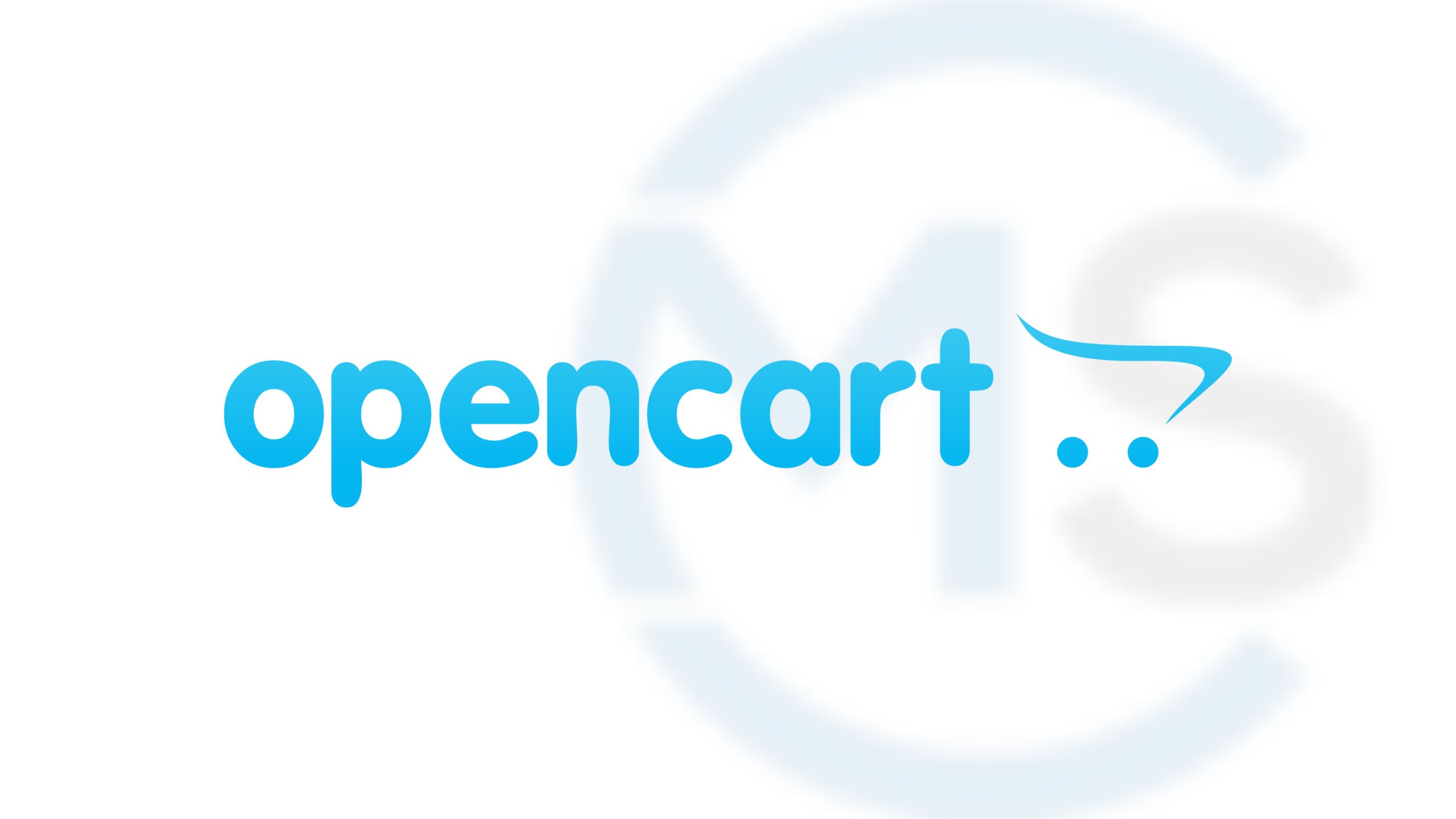Opencart
Comprehensive Guide to OpenCart CMS: Everything You Need to Know
OpenCart is a widely used open-source e-commerce platform known for its simplicity, flexibility, and powerful features. Whether you are a small business owner or managing a large-scale online store, OpenCart offers a robust solution that can be tailored to meet your specific needs. In this article, we will delve into the details of OpenCart, from its history and key features to the latest updates, migration processes, and the best modules to enhance your store. Additionally, we will answer some of the most common questions about OpenCart to help you make informed decisions.
1. General Information: History and Versions of OpenCart
OpenCart was created by Daniel Kerr in 2005, with the goal of providing a user-friendly e-commerce platform that would be easy to install, configure, and use. The platform quickly gained popularity due to its open-source nature, which allowed developers to contribute to its growth and functionality.
Evolution of OpenCart Versions
- OpenCart 1.x: The first version of OpenCart was released in 2009. It provided a simple and effective solution for small businesses to set up their online stores without the need for extensive technical knowledge. The platform included basic features like product management, order processing, and customer management.
- OpenCart 2.x: Released in 2014, this version introduced a more modern design, improved usability, and additional features such as multi-store support, responsive templates, and enhanced SEO capabilities. OpenCart 2.x also introduced an extension marketplace, making it easier for users to find and install plugins to extend the functionality of their stores.
- OpenCart 3.x: The release of OpenCart 3.0 in 2017 marked a significant upgrade with a focus on improving the user experience. It introduced a new admin interface, better performance, and support for the Twig template engine, which allowed for more flexible and secure customization. OpenCart 3.x also improved its integration with payment gateways and shipping providers, making it easier to manage transactions and deliveries.
- OpenCart 4.x: The latest version, OpenCart 4.0, was released in 2022. It represents a major leap forward in terms of functionality, security, and performance. This version introduced new features like multi-language and multi-currency support, a revamped extension marketplace, and enhanced API capabilities for better integration with third-party services.
2. Features of OpenCart 3.x and What’s New in OpenCart 4.x
Key Features of OpenCart 3.x
- User-Friendly Interface: OpenCart 3.x is known for its intuitive and easy-to-navigate admin panel. It allows users to manage products, customers, orders, and settings with minimal effort.
- Customization and Flexibility: The introduction of the Twig template engine in OpenCart 3.x enabled more flexible customization options for developers, making it easier to create unique designs and features for online stores.
- Multi-Store Support: OpenCart 3.x allows users to manage multiple stores from a single admin interface, which is particularly useful for businesses with different brands or regional stores.
- SEO Optimization: OpenCart 3.x includes built-in SEO tools that help improve the visibility of your store in search engine results. This includes options for custom URLs, meta tags, and sitemaps.
- Extension Marketplace: The OpenCart extension marketplace offers thousands of plugins and modules that can be easily installed to enhance the functionality of your store. From payment gateways to shipping methods, there’s an extension for almost every need.
What’s New in OpenCart 4.x?
- Improved Performance: OpenCart 4.0 has been optimized for better performance, ensuring faster loading times and a smoother shopping experience for customers. This is particularly important for large stores with extensive product catalogs.
- Enhanced Security: Security is a top priority in OpenCart 4.0, with new features like two-factor authentication (2FA) for the admin panel and improved encryption methods for sensitive data.
- API Enhancements: The API capabilities in OpenCart 4.x have been expanded, making it easier to integrate with third-party services such as ERPs, CRMs, and other e-commerce platforms. This allows for better data synchronization and automation of business processes.
- New Extension Marketplace: The extension marketplace in OpenCart 4.0 has been redesigned for easier navigation and better compatibility checks, ensuring that users can find the right modules without compatibility issues.
- Multi-Language and Multi-Currency Support: OpenCart 4.0 makes it easier to manage stores that cater to an international audience, with improved multi-language and multi-currency features that allow for seamless localization.
3. Migration from OpenCart 1.x and 2.x to Newer Versions
Migrating from older versions of OpenCart, such as 1.x and 2.x, to the latest version (4.x) can be a daunting task, especially for businesses with a lot of data and customizations. However, the benefits of upgrading far outweigh the challenges, as newer versions offer better security, performance, and features.
Steps for Migration
- Backup Your Data: Before starting the migration process, it’s crucial to back up all your data, including your product catalog, customer information, orders, and any customizations you’ve made.
- Choose a Migration Tool: Several migration tools are available that can help automate the process of transferring data from an older version of OpenCart to a newer one. These tools can significantly reduce the time and effort required for migration.
- Test the Migration: Once the data is migrated, it’s important to thoroughly test your new store to ensure that everything is working as expected. This includes checking the functionality of payment gateways, shipping methods, and any custom modules.
- Optimize and Customize: After migration, you may need to optimize your store for the new version by adjusting settings, installing new modules, and customizing the design to match your brand.
- Go Live: Once you’re satisfied with the new store’s performance and functionality, you can go live with the new version. It’s advisable to monitor the store closely during the initial days after migration to address any issues that may arise.
Challenges of Migration
- Compatibility Issues: Custom modules and themes developed for older versions may not be compatible with newer versions of OpenCart, requiring modifications or replacements.
- Data Integrity: Ensuring that all data, including product descriptions, customer information, and order histories, is accurately transferred is critical. Any loss of data can result in operational issues and customer dissatisfaction.
- Downtime: Depending on the complexity of your store, the migration process may require some downtime. It’s important to plan the migration during off-peak hours to minimize the impact on your business.
4. Modules That Expand Capabilities and Reduce Development Time
OpenCart’s extensive module ecosystem is one of its greatest strengths. There are thousands of modules available that can add new features to your store, automate tasks, and improve the shopping experience for your customers.
Essential OpenCart Modules
- Payment Gateway Modules: These modules allow you to integrate various payment methods into your store, such as PayPal, Stripe, and Authorize.net. Having multiple payment options increases the likelihood of conversions.
- Shipping Modules: Shipping modules provide integrations with carriers like FedEx, UPS, and DHL. They can automate the calculation of shipping costs, print labels, and track shipments.
- SEO Modules: SEO modules help improve your store’s visibility in search engines by optimizing on-page elements like meta tags, URLs, and sitemaps. They can also automate the process of generating and updating sitemaps.
- Analytics Modules: These modules integrate with services like Google Analytics to provide insights into your store’s performance, customer behavior, and sales trends.
- Customer Support Modules: Customer support is crucial for e-commerce success. Modules like live chat, help desks, and ticketing systems can enhance your customer service capabilities.
- Marketing Modules: From email marketing to abandoned cart recovery, marketing modules can help you drive more traffic to your store and increase sales.
Reducing Development Time with Modules
Using pre-built modules can significantly reduce the time and cost associated with developing custom features. For example, instead of building a custom payment integration from scratch, you can install a ready-made module that’s already been tested and optimized for OpenCart.
However, it’s important to choose modules carefully, ensuring they are from reputable developers and are regularly updated to maintain compatibility with the latest version of OpenCart.
5. OpenCart CMS: A Solution for Large Online Stores
While OpenCart is often seen as a solution for small to medium-sized businesses, it is also a powerful platform for large-scale online stores. Its scalability, flexibility, and extensive module ecosystem make it well-suited for businesses with large product catalogs and high traffic volumes.
Scalability
OpenCart’s architecture allows it to handle large amounts of data and traffic without compromising performance. By optimizing the server environment, using caching solutions, and employing content delivery networks (CDNs), OpenCart can scale to meet the demands of growing businesses.
Multi-Store Management
For businesses with multiple brands or international operations, OpenCart’s multi-store feature allows for the management of several stores from a single admin panel. This not only simplifies administration but also ensures consistency across all stores.
Customization
Large stores often require unique features and customizations to meet specific business needs. OpenCart’s open-source nature allows developers to create custom modules and themes that align with the store’s branding and functionality requirements.
Case Studies
Several large e-commerce businesses have successfully used OpenCart to power their stores, showcasing its capability to handle complex operations and large-scale deployments. These case studies highlight the platform’s flexibility and effectiveness in various industries.
6. Developing a Website on OpenCart and Creating Unique Modules
Developing an e-commerce website on OpenCart involves several key steps, from planning and design to development and deployment. By following a structured approach, you can create a powerful online store that meets your business needs.
Planning and Design
- Requirements Gathering: The first step in developing a website on OpenCart is to gather requirements. This includes defining the products you will sell, the target audience, and the features you need.
- Design: Once the requirements are clear, the next step is to design the website. This includes creating wireframes, mockups, and selecting a theme that aligns with your brand.
Development
- Installation and Configuration: Installing OpenCart is straightforward and can be done in a few minutes. After installation, you’ll need to configure the basic settings, such as store information, currency, language, and payment methods.
- Customization: Customizing OpenCart to meet your specific needs may involve modifying templates, creating custom modules, and integrating with third-party services. The Twig template engine makes it easier to create custom designs without affecting the core code.
- Module Development: If you need features that are not available in the existing modules, you can develop custom modules. This requires knowledge of PHP, HTML, CSS, and JavaScript. Custom modules can add new functionalities, such as advanced search, product filters, or integration with external systems.
Testing and Deployment
- Testing: Before going live, it’s essential to thoroughly test the website. This includes checking for compatibility across different browsers and devices, testing payment and shipping methods, and ensuring that all features work as expected.
- Deployment: Once testing is complete, the website can be deployed to the live server. It’s important to monitor the website closely after deployment to ensure everything runs smoothly.
Maintenance and Updates
Regular maintenance is crucial for keeping your OpenCart store secure and up to date. This includes applying security patches, updating modules, and optimizing performance. Staying on top of updates ensures that your store remains competitive and secure.

10 Common Questions and Answers About OpenCart (FAQ)
1. What is OpenCart?
OpenCart is an open-source e-commerce platform that allows you to set up and manage an online store. It provides a range of features, including product management, order processing, and multi-store support.
2. Is OpenCart free?
Yes, OpenCart is free to download and use. However, you may need to pay for certain extensions, themes, and hosting services.
3. What are the system requirements for OpenCart?
OpenCart requires a web server with PHP 7.2 or higher, a MySQL database, and an HTTPS connection for secure transactions.
4. How easy is it to customize OpenCart?
OpenCart is highly customizable. You can modify the templates, create custom modules, and integrate with third-party services to tailor the platform to your needs.
5. Can I use OpenCart for a large store?
Yes, OpenCart is scalable and can be used for large stores with extensive product catalogs and high traffic volumes.
6. What payment methods are supported by OpenCart?
OpenCart supports a wide range of payment methods, including PayPal, Stripe, Authorize.net, and many others. Additional payment gateways can be added via modules.
7. How do I optimize OpenCart for SEO?
OpenCart includes built-in SEO tools that allow you to optimize URLs, meta tags, and sitemaps. Additionally, you can use SEO modules to further enhance your store’s search engine visibility.
8. Is OpenCart secure?
OpenCart is secure, but it’s important to keep the platform and all modules up to date. Using strong passwords, enabling two-factor authentication, and regularly applying security patches are essential practices.
9. Can I migrate my store from another platform to OpenCart?
Yes, it’s possible to migrate from other platforms to OpenCart. Several migration tools and services can help transfer your data, including products, customers, and orders, to OpenCart.
10. Where can I find support for OpenCart?
Support for OpenCart is available through the official community forum, the OpenCart documentation, and third-party developers. You can also find paid support services if needed.
Conclusion
OpenCart is a versatile and powerful e-commerce platform that can be tailored to meet the needs of businesses of all sizes. Whether you’re setting up a small online store or managing a large-scale e-commerce operation, OpenCart offers the tools and flexibility to help you succeed. By understanding its features, staying up to date with the latest versions, and leveraging its extensive module ecosystem, you can create a unique and effective online store that stands out in a competitive market.
This comprehensive guide has provided an overview of OpenCart’s history, key features, migration processes, and more. Whether you’re new to OpenCart or looking to upgrade your existing store, the information in this article will help you make informed decisions and get the most out of this powerful CMS.

